Where Nature, Tranquility, and Real Estate Potential Meet.
Southern Costa Rica remains one of the country’s most authentic and awe-inspiring regions, a place where towering mountains, lush rainforests, pristine coastlines, and vibrant local culture converge to create a truly unique setting. Unlike the more developed northern and central regions of Costa Rica, the South has preserved its wild, natural charm, while gradually welcoming thoughtful development and sustainable real estate projects.
Stretching from the surf town of Dominical on the Pacific Coast all the way to the Panama border, Southern Costa Rica encompasses a variety of landscapes, climates, and communities, each offering distinct lifestyles and investment opportunities. Whether you’re looking for a secluded ocean-view villa, fertile farmland, an off-grid eco-retreat, or a friendly local town with services and culture, the South provides something for everyone.
For real estate investors, expats, retirees, and nature lovers, the southern part of the country offers:
- Lower property prices compared to the Central Valley and Guanacaste,
- Incredible biodiversity and conservation areas,
- A slower, healthier lifestyle rooted in nature and local traditions,
- And a strong focus on sustainability, wellness, and community living.
Over the next sections, we’ll take a deep dive into the most important regions of Southern Costa Rica, from the coastal gems of the Costa Ballena and the rugged wilderness of the Osa Peninsula, to the fertile highlands of San Isidro de El General and the remote border towns near Panama. We’ll explore what makes each area special, who they’re best suited for, and what you need to know if you’re considering buying property or relocating
to this remarkable part of the worl .
Costa Ballena
The Gateway to Southern Costa Rica’s Coastal Paradise
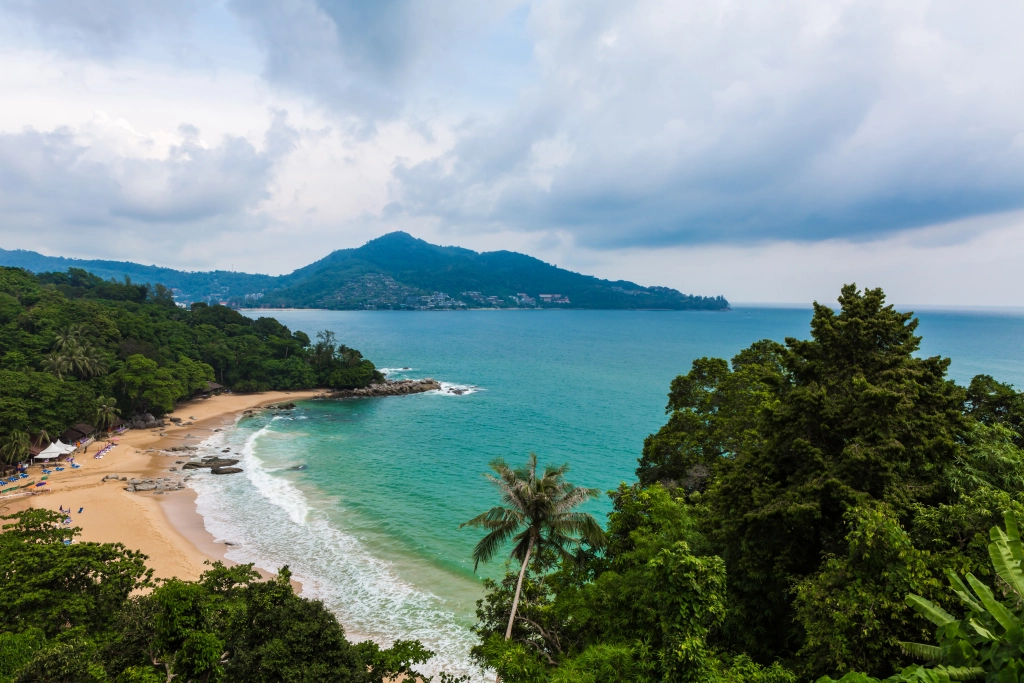
Nestled between the dramatic jungle-covered mountains of the Southern Pacific and the sparkling blue waters of the Pacific Ocean, Costa Ballena is often considered the heart of Costa Rica’s southern coast. The name “Ballena”, which means “whale” in Spanish, reflects both the region’s famous seasonal visitors (humpback whales that migrate here to breed and give birth) and the whale tail-shaped sandbar that has become an iconic natural symbol.
This breathtaking coastal corridor stretches roughly from the surfing village of Dominical, through the growing town of Uvita, and down to the charming and culinary haven of Ojochal. These three towns each offer distinct personalities and lifestyle opportunities, but together they form a cohesive region that has become increasingly attractive to foreign investors, retirees, and Costa Rican families looking for a peaceful yet connected life near nature.
Let’s take a closer look at each of the towns that make up Costa Ballena:
Dominical: Bohemian Vibes and Surfer Spirit
Once a sleepy fishing village, Dominical has evolved into a vibrant, bohemian coastal town known for its consistent surf, laid-back vibe, and close connection to nature. It still retains its rustic charm, with dirt roads, beachside food stalls, and artisan markets, but in recent years it has seen a steady rise in small boutique hotels, yoga retreats, and eco-conscious developments.
Dominical is particularly attractive to:
- Surfers and digital nomads looking for a cool, creative community,
- Investors interested in small-scale tourism properties
(hostels, cabinas, eco-hotels), - Buyers seeking jungle lots or homes in the surrounding hills with panoramic ocean views.
Real estate in Dominical ranges from modest bungalows and off-grid cabins to luxurious cliffside villas with private pools and dramatic sunset vistas. While the town itself is small, its proximity to San Isidro de El General (about an hour’s drive inland) means residents and visitors have access to urban services when needed.
Uvita: The Commercial and Cultural Hub of the South Pacific
As you head south from Dominical, the next major town is Uvita, widely considered the commercial heart of the Costa Ballena. Uvita is where you’ll find the largest grocery stores, banks, pharmacies, mechanics, veterinary clinics, and other essential services in the area. It also hosts events such as the Envision Festival, an international celebration of music, sustainability, and conscious living.
What sets Uvita apart is the unique combination of infrastructure, access to nature, and business opportunity. The town borders Marino Ballena National Park, where the famous Whale’s Tail sandbar emerges at low tide, attracting thousands of tourists each year for whale watching, snorkeling, and beach walks.
For real estate buyers, Uvita offers:
- A diverse mix of property types: from beach-access homes and gated communities to jungle acreage and income-producing rentals,
- An established expat population,
- Opportunities for investment in hospitality, wellness tourism, or family-friendly residential projects.
Uvita also has a growing number of international schools, making it a viable option for families looking to relocate full-time.
Ojochal: Fine Dining, Quiet Living, and Elegant Simplicity
Further south lies Ojochal, a lush and peaceful village known as one of the most refined communities on the southern Pacific coast. Ojochal has earned a reputation as the culinary capital of Southern Costa Rica, thanks to its eclectic mix of gourmet restaurants, French bakeries, and international chefs who have made it their home.
But Ojochal is more than just food. It’s a well-organized, community-driven town with paved roads, bilingual schools, and a relaxed yet sophisticated atmosphere.
Many expats from North America and Europe have settled here, creating a welcoming environment for newcomers while maintaining harmony with the local culture and environment.
Real estate in Ojochal is characterized by:
- Spacious jungle lots with mature trees and wildlife,
- Ocean-view homes perched in the foothills,
- Boutique hotels, B&Bs, and private estates ideal for retirement or seasonal rental income.
The community values tranquility, privacy, and nature, making Ojochal perfect for those seeking a slower pace of life without sacrificing comfort or community.
Why Choose Costa Ballena?
Costa Ballena is often described as the sweet spot of Costa Rica’s Pacific coast, far enough south to be immersed in raw, untouched nature, yet developed enough to offer essential services, international schools, and a sense of modern comfort. The region attracts a diverse group of residents: from eco-entrepreneurs and artists to retirees, digital nomads, and families.
Key advantages include:
- Reliable infrastructure and road access
(especially since the paving of Route 34, the “Costanera Sur”), - Year-round tourism and rental income potential,
- Proximity to both the mountains and the ocean
- A balance of development and conservation.
Whether you’re looking for a peaceful home surrounded by howler monkeys and toucans, a profitable Airbnb with ocean views, or land to build a sustainable project, Costa Ballena provides a rare opportunity to invest in a region that still feels
wild, authentic, and full of promise.
San Isidro De El General (Pérez Zeledón)
Southern Costa Rica’s Mountain Valley Hub
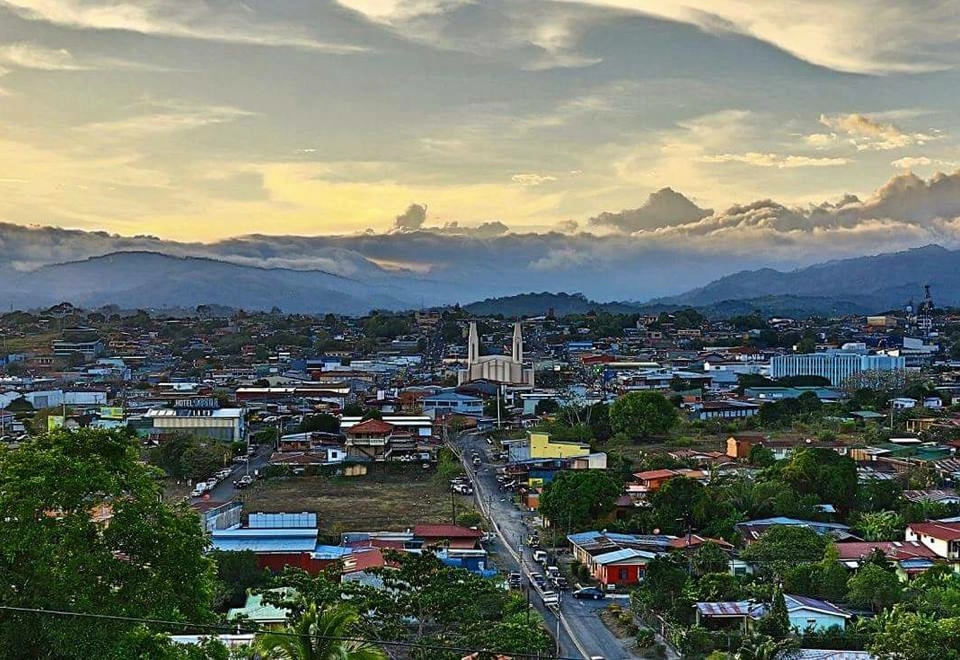
While the coastal regions of southern Costa Rica often steal the spotlight for their beaches and rainforests, the inland valley of San Isidro de El General, also known as Pérez Zeledón, offers a different kind of magic. Tucked between the towering Talamanca Mountain Range and the rolling green hills of the southern interior, this highland region is the largest city in the south and an essential hub for commerce, agriculture, healthcare, and education.
San Isidro blends the conveniences of an established town with the natural charm of the surrounding countryside. It’s a favorite among those who value cooler temperatures, fertile land, panoramic mountain views, and a more traditional Costa Rican lifestyle, all within driving distance of the Pacific coast.
A Town with Everything You Need, and Nothing You Don’t
As the economic and administrative center of the canton of Pérez Zeledón, San Isidro offers many of the services that are lacking in more rural or coastal areas.
It has:
- Hospitals and private clinics
- Banks and government offices
- Universities, high schools, and bilingual schools
- Hardware stores, supermarkets, and agricultural supply shops
- Public transportation and intercity bus terminals
This makes it a highly attractive location for those who want to live close to nature, but still need easy access to reliable healthcare, professional services, and commercial infrastructure.
Unlike tourist towns, the economy here is not dependent on tourism. Instead, it thrives on agriculture, trade, construction, and a growing real estate market driven by locals and expats alike.
A Region of Microclimates and Diversity
One of the most attractive features of Pérez Zeledón is its range of altitudes and microclimates. From the warm valley floor around San Isidro itself (approximately 700 meters / 2,300 ft above sea level), to the fresh mountain air of surrounding villages like Rivas, San Gerardo, La Palma, and Quebradas, you can choose the climate and lifestyle that suits you best.
- Lower elevations are ideal for farming, gardening, and family life. The land is rich and fertile, perfect for growing everything from tropical fruit to coffee and cacao.
- Higher elevations, such as the villages near Cerro de la Muerte, offer cool mountain weather, often with misty mornings and epic views. These areas are popular among expats looking for quiet, rural mountain living.
The diversity of ecosystems also makes Pérez Zeledón a haven for birdwatchers, nature photographers, and anyone looking for a peaceful life surrounded by rivers, forests, and wildlife.
Real Estate in Pérez Zeledón: Land, Opportunity, and Affordability
Compared to coastal regions like Uvita or Ojochal, property in Pérez Zeledón remains much more affordable, especially when it comes to larger parcels of land. This makes it an attractive destination for a wide range of buyers:
- Retirees looking for a tranquil lifestyle in the hills with easy access to town,
- Families who want a safe, community-oriented environment with schools and infrastructure,
- Investors seeking land for development, permaculture, or small eco-communities,
- Farmers and homesteaders interested in self-sufficiency, reforestation,
or organic agriculture.
Real estate options include:
- Townhouses and apartments in the center of San Isidro,
- Traditional “fincas” (farms) with rivers and mountain views,
- Jungle lots ready to build on,
- Renovated colonial homes and modern constructions.
There’s also a steady rental market, especially long-term rentals for teachers, doctors, and remote workers.
A Growing Expat and Conscious Living Community
In recent years, Pérez Zeledón has quietly attracted a small but growing community of expats, entrepreneurs, digital nomads, and eco-conscious individuals seeking a lifestyle that combines purpose, nature, and affordability.
Many are drawn to the area for:
- Organic farming and permaculture projects,
- Intentional communities and wellness centers,
- Proximity to Chirripó National Park,
which offers some of the best hiking in Central America.
There are also several bilingual schools and alternative education programs, making it a viable option for young families looking to raise children outside of traditional urban centers.
Proximity to the Coast, Without the Heat or the Hype
One of the biggest advantages of living in Pérez Zeledón is its central location. It’s just:
- 45 minutes from Dominical and the Pacific beaches,
- 2.5 hours from San José via the Interamericana Highway,
- 2 hours from the Panama border.
This allows residents to enjoy weekend trips to the beach, day hikes in the mountains, or even quick visits to the capital, all without the higher cost of living associated with tourist-heavy areas.
Final Thoughts: The Hidden Value of the Southern Highlands
San Isidro de El General and the surrounding region of Pérez Zeledón offer a rare combination of climate, community, services, and natural beauty. It’s a place where you can still find spacious land at a reasonable price, wake up to birdsong and clean air, and live within reach of both modern amenities
and world-class natural attractions.
For real estate buyers and investors seeking long-term value, sustainability, and peace of mind, Pérez Zeledón represents one of the most compelling regions
in southern Costa Rica.
The Osa Peninsula
Costa Rica’s Last Great Wilderness
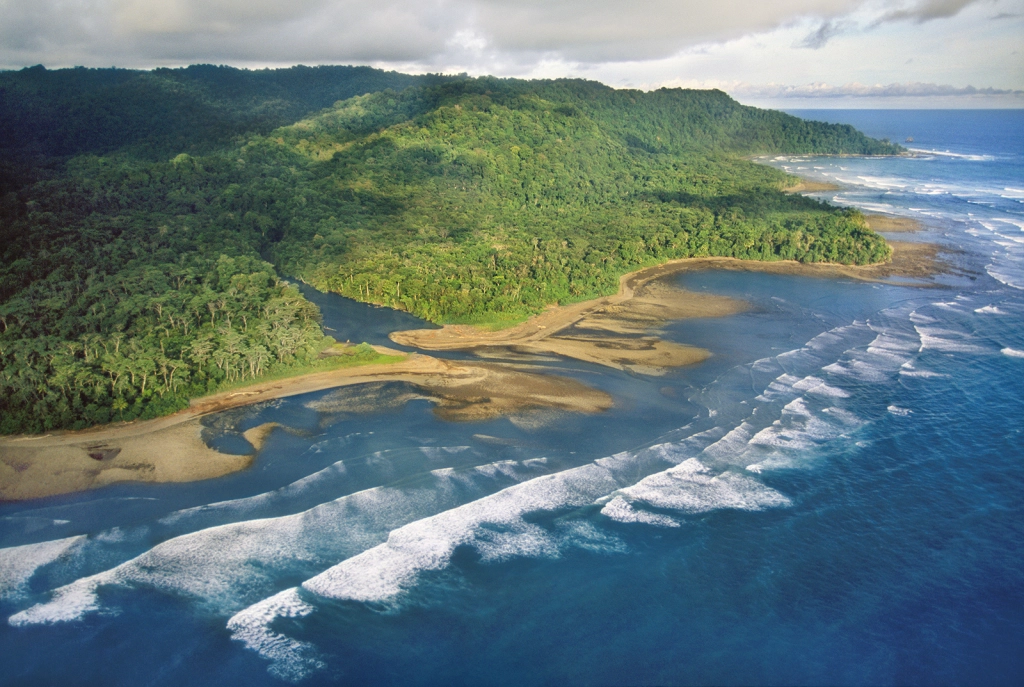
Tucked away in the far southwestern corner of the country, the Osa Peninsula is often described as one of the most biologically intense places on Earth, a phrase coined by National Geographic, and no exaggeration.
This remote and pristine region is home to 2.5% of the planet’s biodiversity,
despite representing less than 0.001% of its landmass. It’s where untamed rainforest meets the sea, where jaguars still roam,
and where nature is not just present, but dominant.
Yet beyond its ecological fame, Osa is increasingly becoming a destination for a very specific type of real estate investor or resident, those who seek authenticity, isolation, sustainability, and a deep connection to nature.
A Region of Limitless
Natural Beauty
The Osa Peninsula is bordered by the Pacific Ocean on its west side and the Golfo Dulce (Sweet Gulf) to the east, a calm, fjord-like body of water known for its rich marine life and bioluminescence. At the heart of the peninsula lies Corcovado National Park, often called the “crown jewel” of Costa Rica’s park system. Covering more than 160 square miles of primary rainforest, Corcovado is home to:
- Four species of monkeys,
- Scarlet macaws and toucans,
- Tapirs, jaguars, sloths, and anteaters,
- Crocodiles, dolphins, and endangered sea turtles.
Surrounding the park are biological corridors, private reserves, and eco-lodges that help protect and promote this unique environment. Development here has been minimal and heavily regulated, preserving the peninsula’s character and making it a haven for eco-tourism, conservation projects, and off-grid living.
Key Towns in the Osa Peninsula
While much of the Osa remains wild and roadless, there are two main settlements where people live, invest, and base their operations:
Puerto Jiménez and Drake Bay.
Puerto Jiménez: The Peninsula’s Gateway and Growing Hub
Located on the eastern side of the peninsula along the calm waters of the Golfo Dulce, Puerto Jiménez is the largest town in Osa and serves as the main access point for visitors, supplies, and services.
What you’ll find in Puerto Jiménez:
- A regional airport with daily flights to San José,
- Grocery stores, banks, clinics, and schools,
- Restaurants, shops, and tour agencies,
- A marina and boat access to the gulf.
Puerto Jiménez has evolved from a rugged frontier town into a rising eco-development hotspot, with an increasing number of eco-lodges, boutique hotels,
wellness retreats, and private jungle estates.
Real estate opportunities here include:
- Oceanfront and gulf-view land,
- Jungle lots within minutes of town,
- Income-producing rental homes and lodges,
- Off-grid properties with solar and rainwater systems.
Despite its remoteness, Puerto Jiménez offers more infrastructure than other parts of the peninsula, making it suitable for those who want nature with some modern comforts.
Drake Bay: Remote, Pristine, and Absolutely Magical
On the northwest coast of the peninsula lies Bahía Drake (Drake Bay), a remote and stunning area that feels like stepping into another world. Once only accessible by boat or small plane, and still challenging to reach by road, Drake Bay has remained almost entirely untouched by mass tourism or development.
This area is known for:
- Direct access to Corcovado National Park and Caño Island, a top snorkeling and diving spot,
- Quiet beaches, dense jungle, and abundant wildlife,
- A handful of small ecolodges and adventure tour operators.
Real estate here is rare and precious. Much of the land is held by long-standing families, but new opportunities occasionally arise, especially for buyers seeking eco-resorts, reforestation projects, or completely off-grid homes.
Drake Bay is ideal for:
- Conservationists and nature lovers,
- Wellness retreats and retreat center founders,
- Investors with a long-term vision and minimal-impact development goals.
The Osa Buyer Profile: Who Comes Here?
Unlike regions that attract mass tourism or short-term expats, the Osa Peninsula draws a different kind of resident and investor. These are people who:
- Value privacy, seclusion, and minimalism,
- Are committed to conservation, permaculture, or off-grid living,
- Want to create low-impact, purpose-driven projects (eco-lodges, educational centers, healing retreats),
- See land not just as property, but as a legacy to protect.
In many cases, buyers in Osa are pioneers and visionaries, people who are willing to work with nature, not against it.
Challenges and Considerations
Owning property in the Osa Peninsula is not for everyone. The very things that make it magical, remoteness, wildness, ecological integrity,
also make it more demanding.
Potential challenges include:
- Limited access (some areas only reachable by 4×4, boat, or plane),
- Power and water systems often being off-grid or self-maintained,
- Strict environmental regulations on building and land use,
- Limited access to hospitals or emergency services.
However, for those who are prepared, Osa offers a life unlike anywhere else, rich in peace, wildlife, and timeless beauty.
Final Thoughts: Investing in the Wild Heart of Costa Rica
The Osa Peninsula is not about flashy developments or fast returns. It’s about preservation, long-term value, and living in harmony with the planet.
It’s for those who seek more than a property they seek a purpose, a sanctuary, a vision.
If your dream is to wake up to the call of howler monkeys, drink your morning coffee while watching scarlet macaws fly overhead, and live in true balance with nature, then the Osa Peninsula may just be the last wild place on Earth you’ve been searching for.
Golfito & Pavones
Surf, Serenity, and Untapped Coastal Potential
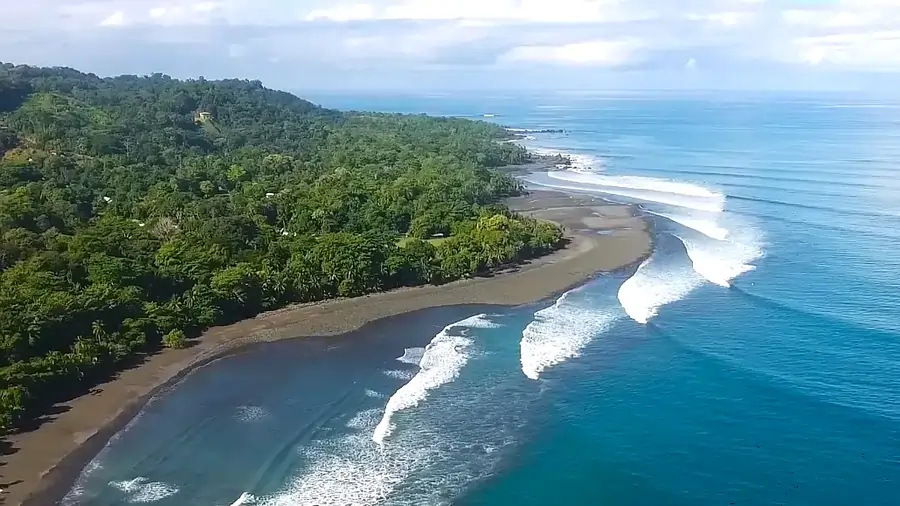
On the southernmost stretch of Costa Rica’s Pacific coast, just before reaching the Panama border, lies a region that is both rich in maritime history and full of future potential, the area of Golfito, Pavones, and the surrounding beaches and jungles of the southern Golfo Dulce.
Often overshadowed by more developed coastal zones to the north, this region offers an authentic, slower-paced lifestyle, ideal for surfers, sport-fishing enthusiasts, nature lovers, and real estate buyers seeking value and opportunity.
Here, time moves at the rhythm of the tides. The towns are modest, the roads are quiet, and the people, both local and foreign, are drawn by a shared desire to live close to the sea, in peace with nature, and far from the stress of modern life.
Golfito: A Port Town with History and a Vision for the Future
Once a booming banana export hub operated by the United Fruit Company, Golfito has transformed from an industrial center into a gateway for sport fishing, boating, and eco-tourism. The town sits on the calm waters of the Golfo Dulce, one of only a few tropical fjords in the world, where dolphins, whale sharks, and sea turtles can be spotted year-round.
Golfito’s revival is being driven by several key developments:
- The Golfito Marina Village, a modern, full-service marina that has brought international yachting and fishing tourism back to the region,
- A growing number of boutique hotels and coastal eco-resorts,
- Improved infrastructure and regional airport access,
- Interest from buyers and investors looking for affordable coastal real estate with long-term growth potential.
Real estate in Golfito includes:
- Waterfront homes and marina-view condos,
- Hillside properties with views of the gulf and surrounding rainforest,
- Land for tourism or mixed-use development,
- Traditional homes and lots in town at very accessible prices.
Golfito is also a duty-free zone, which attracts shoppers from all over the country and adds a layer of economic activity beyond tourism.
Pavones: Legendary Waves, Laid-Back Living
Traveling southwest from Golfito along the coast brings you to Pavones, a tiny surf town with a global reputation. Home to one of the longest left-hand waves in the world, Pavones is a mecca for serious surfers, but it’s also much more than that.
What makes Pavones unique:
- Miles of uncrowded beaches, where jungle meets the sea,
- A tight-knit community of locals and expats living a simple,
intentional lifestyle, - Nearby rivers, waterfalls, and hiking trails,
- A strong emphasis on sustainability, permaculture, and natural building.
Real estate in Pavones is particularly attractive for:
- Surfers looking to live steps from the break,
- Eco-developers and small hospitality entrepreneurs,
- Investors who understand the long-term value of surf towns
with global appeal.
While some lots in Pavones are still available at low prices, demand is rising, and new developments are beginning to appear, from off-grid cabinas to beachfront eco-lodges and boutique retreats.
Surrounding Areas: Zancudo, Pilón, and the Coastal Hills
Beyond Golfito and Pavones, the southern Golfo Dulce coast is dotted with smaller, lesser-known communities like:
- Playa Zancudo – A long, quiet beach with calm waves, ideal for swimming, fishing, and family life.
- Pilón – A small village popular with surfers and off-grid homesteaders.
- La Gamba and Río Claro – Inland towns known for their proximity to wildlife refuges and biological stations.
These areas offer extremely affordable land, particularly for buyers who are interested in:
- Retirement homes with low overhead costs,
- Eco-projects or small farms,
- Living quietly and self-sufficiently in nature.
With fewer restrictions than the Osa Peninsula and more space than Costa Ballena, this part of the south is a blank canvas for responsible development and lifestyle design.
Why Choose Golfito & Pavones?
This region is perfect for buyers who want:
- A coastal lifestyle without the crowds or high prices of
northern beach towns, - Year-round access to water activities like surfing, kayaking, sailing, and deep-sea fishing,
- A slower pace of life, surrounded by untouched nature,
- The ability to invest before the market fully takes off.
It also offers excellent proximity to Panama, which can be a benefit for border runs, international travel (via the city of David), or accessing certain goods and services not available locally.
Considerations for Buyers
While the charm of this region lies in its simplicity and authenticity, it also requires a bit of patience and self-reliance. Some considerations include:
- Infrastructure can be basic in rural areas,
- Access to medical services and schools is more limited outside of Golfito,
- Most developments require off-grid systems (solar, rainwater, etc.),
- Transportation: Reaching Pavones requires a 4×4 and a sense of adventure.
For those who embrace these elements, the rewards are immense, daily sunsets over the ocean, wildlife at your doorstep, and the deep satisfaction of living in harmony with the land.
Final Thoughts: Coastal Living for the True Nature Lover
Golfito and Pavones represent two sides of the same coin: one a town with a historic soul and emerging growth, the other a surfer’s paradise and peaceful frontier. Together, they offer one of the most underappreciated real estate regions in Costa Rica, but that’s quickly changing.
As more buyers look to escape noise, overdevelopment, and inflated prices, this part of the southern Pacific stands out as one of the few places left where you can still find beauty, balance, and beachfront, all at a price that still makes sense.
Ciudad Neily & the Southern Border
Rural Life, Affordability, and Agricultural Promise
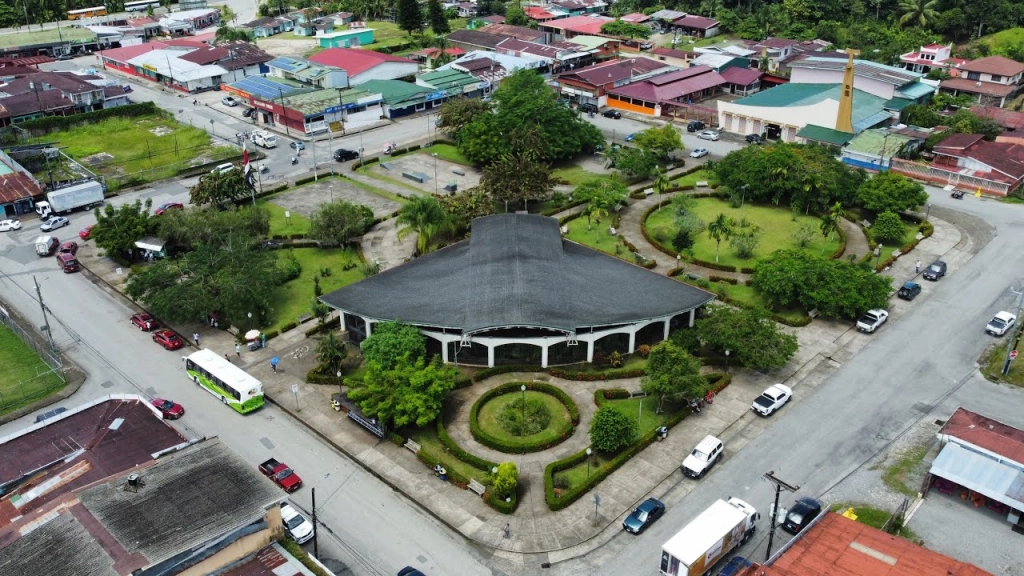
As you travel south from the coastal zones of Golfito and Pavones, the lush tropical landscape begins to flatten into wide green valleys and open farmland. Here, near the Panama border, lies a region rarely visited by tourists but increasingly recognized by investors and lifestyle buyers seeking peace, space, and affordability. Anchored by Ciudad Neily, the largest town in the Coto Brus area, this region represents the southernmost frontier of Costa Rica, geographically, culturally, and economically.
Often overlooked in real estate conversations, this zone offers a low cost of living, fertile land, and a strategic location, making it ideal for agricultural projects, rural homesteads, and those looking to stretch their dollar further while enjoying Costa Rica’s natural beauty and warm community spirit.
Ciudad Neily: A Practical, Down-to-Earth Town
Ciudad Neily is the administrative and commercial hub of the southern border region. While not flashy or touristy, it provides all essential services for local residents and rural communities in the area, including:
- Public and private healthcare clinics and pharmacies,
- Banks, supermarkets, and agricultural supply stores,
- Schools, vocational training centers, and local government offices,
- A hospital and public transportation to the rest of the country.
Unlike expat-heavy areas like Uvita or Ojochal, Ciudad Neily retains a strong local identity. However, a growing number of foreigners are discovering the region for its quiet pace of life, extremely low property prices, and rich farming potential.
The Land of Fincas and Fertility
The broader region surrounding Ciudad Neily, including towns like La Cuesta, Sabalito, Coto 47, and the mountain district of San Vito, is defined by vast agricultural land, lush green hills, and year-round rainfall. Historically used for cattle ranching, rice, plantains,
and palm oil, the land is now drawing interest for:
- Organic farms and agroforestry projects,
- Permaculture and reforestation initiatives,
- Homesteads and eco-communities,
- Small-scale coffee or cacao cultivation in higher elevations.
Property in this region can be incredibly affordable, especially compared to coastal or central areas. Large tracts of land, anywhere from 5 to 100+ hectares, are available at prices that are now almost impossible to find in other parts of Costa Rica.
For buyers with a vision and a willingness to live off the beaten path, this region represents one of the last frontiers of opportunity in the country.
San Vito & Coto Brus: Coffee Country with Italian Heritage
A short drive northeast of Neily brings you into the highlands of San Vito, a charming mountain town founded by Italian settlers in the 1950s. San Vito offers a cooler climate, panoramic views, and a more European-style town layout.
It’s known for:
- High-quality coffee production,
- The Wilson Botanical Garden, a world-renowned plant sanctuary,
- A peaceful, artsy community with a few small hotels and B&Bs.
The elevation (around 1,000 meters / 3,280 ft) provides a refreshing climate perfect for growing coffee, tropical fruits, and medicinal herbs. Real estate here is particularly appealing for those looking to escape the heat, live a quiet rural life, or start a sustainable farm or educational retreat.
Border Proximity and Cross-Country Convenience
Being so close to the Panama border brings several strategic advantages:
- Easy access to David, Panama, a modern city just across the border with shopping malls, hospitals, international flights, and wholesale suppliers.
- Ability to live in Costa Rica while occasionally
crossing the border for services or purchases. - Opportunity for binational business projects, eco-tourism circuits, or
trade-related ventures.
There’s also a growing network of eco-tourism routes connecting Costa Rica’s southern zone with Boquete, Bocas del Toro, and other Panamanian destinations.
Who Is This Region Ideal For? This area is best suited for:
- Budget-conscious retirees looking for a calm, welcoming place to settle,
- Farming and homesteading enthusiasts seeking rich soil and large land parcels,
- Buyers interested in reforestation, conservation, or land banking,
- Those who prefer a simple, rural life far from tourist development.
Unlike the coast, this region is not about beach views or surf breaks. It’s about space, sustainability, and self-sufficiency.
Things to Keep in Mind
While the southern border region has immense promise, it’s not without its considerations:
- Fewer expat services or English-speaking professionals,
- Infrastructure can be rustic in more rural areas,
- Slower appreciation in short-term property value but excellent long-term potential,
- Requires buyers with vision, patience, and adaptability.
Final Thoughts: The Quiet South’s Best-Kept Secret
Ciudad Neily and the surrounding highlands of southern Costa Rica are not for everyone, and that’s what makes them special. These are places where you can still buy fertile, beautiful land for a fraction of the cost you’d pay elsewhere in the country. Where neighbors still greet each other by name, and the rhythm of life is dictated by the seasons, not the stock market.
If you’re seeking a place to build a sustainable project, retire with dignity, or create a legacy rooted in the land, this region just might be Costa Rica’s best-kept secret.
Final thoughts
Why Southern Costa Rica Should Be on Your Real Estate Radar
Southern Costa Rica is not just a destination, it’s a lifestyle, a mindset, and an opportunity. From the vibrant surf towns of the Costa Ballena and the fertile valleys of Pérez Zeledón, to the wild beauty of the Osa Peninsula and the laid-back charm of Golfito, Pavones, and the southern borderlands, this region offers something that few places on Earth still can: unspoiled land, genuine community, and space to breathe.
In a world where overdevelopment and rising prices have changed the face of many tropical real estate markets, the South remains remarkably authentic and accessible. Whether you’re dreaming of an ocean-view eco-retreat, fertile farmland, a jungle sanctuary, or simply a more meaningful and balanced life, this part of Costa Rica provides the raw ingredients to build that dream, sustainably, affordably, and with purpose.
But perhaps most importantly, the South offers freedom: freedom from crowds, from noise, from excess. it invites you to reconnect with nature, with people, and with yourself.
As real estate professionals with deep roots in this region, we’re here to help you explore it, not just as a buyer, but as a future resident, steward, and member of the community. If any of the regions we’ve covered resonate with you, we’d love to guide you through the next steps of discovering what property in southern Costa Rica can mean for your life.
Ready to Explore the South?
Whether you’re just starting your research or ready to visit, we’re here to help.
for personalized property recommendations, market insights, or to schedule a tour of any region that interests you.
Diamante Del Sur Real Estate & Integrated Services
Email: info@diamantedelsurcr.com
Your next chapter starts here
Southern Costa Rica isn’t just a place
to invest, it’s a place to belong.
Come discover where your life,
your land, and your legacy
can truly take root.
© 2025 All Rights Reserved.